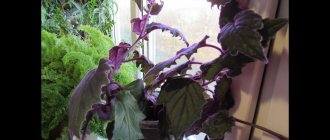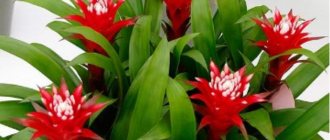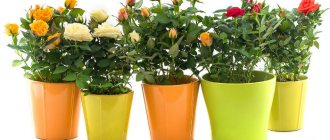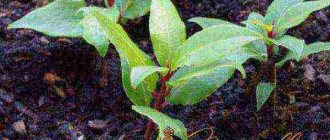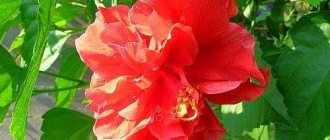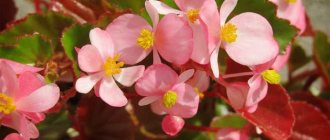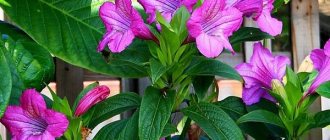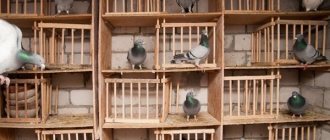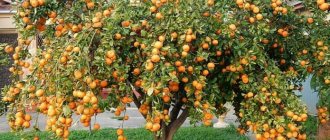Brief description of the plant
Aglaonema Crete
The flower came from the tropics and belongs to the evergreen herbaceous or subshrub subspecies. It is a member of the Araceae family, has vertical or creeping stems, the trunk is formed in the process of foliage dying. It contains many dormant buds and aerial root primordia. Most varieties of aglaonema are propagated by cuttings.
For reference! One of the subspecies of the flower was used in the film "Leon".
Aglaonema street Stripes
Transfer
Young bushes need to be transplanted into new pots annually to create comfortable conditions. Adult plants do not need constant updating of the soil and feel great in cramped pots, so the plant can be replanted every 3-4 years.
Pots that are too large are also not suitable for a bush: in this case, excess moisture may stagnate in the soil. When the right conditions are created, your aglaonema will bloom flowers that will delight you for a long time.
Aglaonema variable
It grows in nature in the Philippines, growing up to 1.5 m long. The leaves are on elongated petioles, reaching 30 cm in length and more than 10 cm in width.
Osteospermum flower - varieties and varieties
Types of variable aglaonema are divided by botany into subgroups:
- Aglaonema Commutatum Maria - includes the subspecies of Aglaonema Maria, growing up to 30 cm. Identified by variegated foliage, easily tolerates temperature drops of up to 15 degrees.
- Elegans - has elongated leaves with uneven color. There are light stripes and strokes on the general green background.
- Maculatum - oval dark green foliage decorated with chaotic whitish strokes. They become denser near the lateral veins.
- Warburgii - identified by white stripes on the foliage, drawn parallel to the lateral veins. Spectacular representatives include Aglaonema Silver Bay or Bay.
Important! Aglaonema Maria Christina is recognized by its high growth - up to 70 cm. The leaves have a bright silver tint, but the appearance resembles relatives from the same series.
Red aglaonema
Possible problems
- The foliage shrivels and the tips turn brown . The air humidity in the room is extremely low, because of this, various harmful insects can also settle on the flower. Do not forget to regularly moisten the bush with a spray bottle, and also pour water into the pan, after adding peat or expanded clay into it.
- Curling of leaves . This is observed when the temperature drops sharply or if the flower is exposed to a draft. Typically, in addition to curling on the plates, the edges turn brown.
- White-yellow spots have formed on the foliage . They appear as a result of sunburn. The bush is removed in partial shade and waited until it cools down, and then its foliage is moistened with water at room temperature.
- Slow growth of the bush, foliage becomes brown . The plant was watered with cold or hard water. Water the aglaonema only with well-settled water for at least 24 hours. To soften the water, pour 0.2 grams of oxalic acid into 1 bucket, mix everything well and leave for 24 hours. You can also soften the water with citric acid.
Among the pests that can settle on the plant are spider mites, mealybugs, aphids, whiteflies and thrips.
Aglaonema Treib
Fuchsia indoor flower - plant varieties
The crop is medium-sized, narrow foliage grows up to 15 cm. The top of the leaf blades is silver-green, the trunk forms many branches. The flower is known for its hardiness, is unpretentious and can be grown by novice gardeners.
The subspecies does not have specific varietal variations. The difference in foliage color appears as a result of maintenance conditions and depends on age and light level.
Treib's Aglaonema species
Top dressing
Spring, summer and the first months of autumn are best for fertilizing. Preference should be given to substances containing nitrogen, but they should be added only according to the instructions, and nothing more.
Feeding frequency is about twice a month. Otherwise, you risk harming the plant instead of strengthening it. The cold season is not suitable for feeding.
The best soil for aglaonema is a mixture of peat, sand and leaf soil. The soil must easily drain water for effective watering.
Aglaonema ribbed
Aglaonema - home care, how aglaonema blooms
Grows in the Malaysian tropics, low-growing type. The trunk can branch; it has ovoid leaves with a pointed end, 20 cm long and no more than 10 cm wide.
The color is dark, with a light stripe on the central vein. The flowering of aglaonema is expressed in the formation of a white cob covered with a large greenish veil.
From the maternal individual, many hybrid forms were obtained, derived from inbreeding with other subspecies. Most specimens do not have their own name, they are presented under the name “Thai aglaonema” or “ribbed hybrid”.
Representatives include First Diamond - erect, with green foliage. Young animals have almost white plates with darkish spots.
Aglaonema Butterfly
Caring for aglaonema at home. Details
The aglaonema flower develops correctly in indoor conditions and feels good if its needs for light, warmth, nutrition and moisture are met.
Landing
The high decorative properties of the plant largely depend on proper planting.
The quality of planting material (cuttings, seeds, fragment of a bush) is important. If you choose the seed planting option, use only fresh seeds collected from ripe scarlet berries. Planting is carried out in spring and summer. A fertile, loose, breathable acidic substrate will provide the plant with good nutrition and improve its appearance. Planting aglaonema involves choosing the right place. The flower feels comfortable on a window facing any side except the south: bright sunlight can cause burns to the foliage.
Bloom
Aglaonema rarely blooms at home.
The beauty of the plant lies in its variegated emerald leaves. Aglaonema flowering is an unattractive phenomenon. From February to November, inconspicuous inflorescences in the form of greenish-yellow cobs, wrapped in a pale blanket, form in the axils of the upper leaves. There can be 1 - 3 pieces. Depending on the variety, the cobs look like a thick short club or a thin long cylinder. Sometimes gardeners sacrifice inflorescences and cut them off for the sake of new leaves. If you don’t do this, you can wait for the fruits to appear - scarlet (less often white) berries with a single grain inside.
Temperature
To preserve the decorative appearance of the flower, it is important to strictly observe the temperature regime. Aglaonema is a heat-loving plant. Drafts and sudden changes in temperature can destroy it. Although there are varieties that can withstand cold temperatures down to + 10°C, the optimal temperature for a flower is considered to be between 15 – 25°C in summer and 15 – 18°C in winter.
If you do not water in winter, the plant can tolerate lower temperatures.
Spraying
The tropics are characterized by high air humidity. To make indoor aglaonema feel comfortable, you need to spray the plant twice every 14 days in the summer, take a warm shower, or wipe the leaves with a damp cloth more often. Just don’t allow moisture to accumulate in the rosette of leaves: this can lead to the death of the plant.
In winter, spraying is carried out less frequently, but the flower is placed in a tray with moistened expanded clay or pebbles . During the heating season, the flower is kept away from radiators, air humidifiers are used, or an open container of water is placed nearby.
Lighting
Lighting is important for plant growth. Aglaonema is genetically configured to receive a lot of light, but it should not be bright and scorching, but diffused.
The scorching summer sun can burn the flower, so windows facing south are dangerous for it. It is best to place green-leaved bushes in partial shade. Variegated types of aglaonema, on the contrary, love bright sunlight: under its influence the leaves become more beautiful. But a little shading is also beneficial for these species. In winter, additional lighting is installed for them.
Watering
The plant is moisture-loving, but stagnation of water is detrimental to it. Watering of aglaonema is carried out in spring and summer, when the top layer of soil dries out.
In winter and when aglaonema is kept in a cool room, this is done less often - about once every 10 days. For irrigation, take clean water, settled in the room.
Pot size
There are no small details in the maintenance of the plant. For proper development, even the size of the pot in which the flower is planted is important. A low pot of small volume is preferable. The tightness will stimulate the formation of new leaves and strengthen the root system of the bush.
Priming
Breathable, moisture-retaining soil for aglaonema is very important. The flower grows well in acidic, loose soil. These characteristics correspond to the ready-made soil mixture for bulbous plants. You can make the soil yourself by taking garden soil, peat, perlite (1: 2: 1), and put 2 times more leafy soil for young bushes.
You can add charcoal to the mixture. For mature plants, the amount of turf soil can be increased.
Feeding and fertilizer
Feeding and fertilizing with mineral and organic substances is an important component of flower care.
Aglaonema is fertilized once every 2 weeks with liquid formulations for decorative foliage plants, containing not only the main elements, potassium, phosphorus and nitrogen, but also microelements that prevent alkalization of the soil. To preserve the decorative appearance of the foliage, foliar feeding is carried out: the leaves are sprayed with diluted liquid fertilizer. It is best to do this after watering in cloudy weather, so as not to accidentally burn the plant. All feeding is carried out from the beginning of March to the beginning of October.
You cannot fertilize in winter, because the plant is resting at this time.
Transfer
Aglaonema is transplanted for the first time a week after purchase. When it adapts a little to home conditions, it is transferred from a temporary pot to a permanent container. Young bushes are replanted once a year, adults - once every 4 years. Replanting aglaonema is necessary when the roots completely entwine the earthen ball. It is always produced in the spring.
A new pot is chosen 20 - 30 mm larger than the previous one. It must have drainage holes and a place to pour a thick layer of drainage, which is necessary so that the water in the pot does not stagnate. The soil is carefully selected, taking into account that it loves acidic and loose soil. The soil mixture should include turf soil (an adult bush can put more of it), peat, leaf soil, charcoal and perlite (sand).
Rest period
Like most plants, the dormant period of aglaonema falls in winter . At this time, they reduce the amount of watering and stop stimulating growth with fertilizers and fertilizing.
Trimming
When aglaonema grows, its trunk becomes exposed. This suggests that the flower needs pruning , with the help of which its rejuvenation is carried out. Cut off the top of the plant with a sharp knife, and dust the cut areas with charcoal powder. The stump is left in the pot.
They continue to take care of it and wait for renewal buds to appear. And the top is rooted in water in which activated carbon is pre-dissolved to avoid souring. Sometimes the top is immediately planted in moist soil. Cover with polyethylene and keep at a temperature of +25°C until rooting.
Homemade aglaonema does not require special care; if properly maintained, it will grow healthy and become a real decoration of the interior.
Aglaonema simplea
It grows from 40 to 80 cm, is classified as medium-sized, has thick and fleshy roots. The stems are cylindrical, up to 2 cm in diameter, with pronounced internodes. When they are damaged, young roots quickly appear at the site of the break. The inflorescence is up to 5 cm long, cob-shaped, appears from April to June, the fruits are formed by September-October.
Varietal variations have different leaf blade sizes, darker or lighter colors, and some representatives have jagged edges, a matte or glossy surface. An interesting variety includes Black Beauty - with almost black foliage and sharp teeth at the end.
Breeding rules
Reproduction. The plant propagates by cuttings, seeds and separations from plants. We will tell you more about the rules of plant propagation below. It is not easy to propagate aglaonema, since it takes a long time to grow and adapt to new conditions. A newly planted aglaonema will not soon begin to bloom and bear fruit.
The best solution for transplanting a bush is to separate shoots with 4-5 leaves. You can start separating after branches appear on the stem.
The top of an aged plant can also be cut off and used as a cutting. After 2-3 weeks, the cuttings will begin to take root. By the way, the plant needs to be propagated only in the warm season.
- Advantages of Gardena gardening equipment
Bathhouse made of 6x6 timber
- Ktenanta - types, cultivation characteristics and instructions for care at home. 110 photos of plants
Let's talk a little about sowing seeds. This option will be preferred by experienced and persistent farmers. The first month of spring and the last month of winter are the best times to place seeds in light soil. After planting, you need to moisten the soil and cover it with glass.
It is necessary to constantly maintain soil moisture and remove glass daily to ventilate the soil. It is necessary to slightly shade the pot with seeds.
Aglaonema modest
The medium-sized perennial came from the tropics of Indochina, grows up to 50 cm, has large and oval foliage, uniform in color, with a slight point at the tips. Convex veins give the plates relief. The subspecies is kept at home to quickly purify indoor air.
In flower shops there are variations with two-color or variegated foliage colors. On a light or dark background, light beige or almost white spots are clearly visible.
The humble aglaonema
Aglaonema painted
The genus comes from Borneo, the pattern on the foliage of each representative is unique. Spots on leaf blades come in both white and beige tones, combined with silver, green, light green and emerald colors. The bush grows up to 50 cm and is characterized by a lush crown.
The plant blooms in July-August, resulting in yellowish-reddish berries.
Important! Home flowers react poorly to drafts and tobacco smoke. Constant harmful influence can cause his death.
Aglaonema indoor Friedman
The list of known variations includes:
- Debora - has elongated oval leaves with snow-white petioles. The plate is dark green in color with bright white veins, with lighter stripes located between them.
- Queen of Siam - oval foliage with a slightly pointed top, whitish petioles and a dark green border around the edges, framed by a thin whitish thread. The general background of the plate is dark green; there are thin silver-green lines near the individual lateral veins.
- Rhapsody in Green - covered with numerous linear-lanceolate foliage, with a slight wave along the edge and a pointed top. The outer part of the silver-gray leaves is framed by a dark green border.
- Silver Frost - impressive with its appearance. The oval foliage with pointed ends is decorated with a branching dark green pattern located near the central vein. There is a greenish border along the edge, the rest of the area is greenish-gray, with a small number of green dots. The wrong side is plain.
- Elegant varieties Silver Queen (Queen) and Silver King. The former is known for its small dark green spots on greenish-silver leaves, the latter for its wide plates covered with longitudinal green stripes on an overall silvery background.
- Green Sun is a bush up to 1 m high. The tips of large and oval leaves have a white tone. The petioles are painted pinkish, and the plates have white stripes stretching from the central vein to the side ones.
Important! Representatives of elite varieties with snow-white or pinkish petioles have become fashionable. These include Tricolor - with silver-white and dark green spots.
Aglaonema curly
Aglaonema street Cutlass
An evergreen perennial crop originating from the Philippines, growing up to 1 m in height. The crown is made up of tough leathery foliage, the color varies from silver-gray to dark green.
The average length of the plates is from 20 to 30 cm, 13 cm wide. The flower is initially snow-white, then becomes yellow. Ripe berries are dark red in color.
Important! The culture requires a certain temperature, lighting and humidity level. Grown in winter gardens and greenhouses.
The flowers have pinkish or reddish spots on the leaf blades. A special feature is the unusual arrangement of foliage - at different angles, resulting in the impression of a wavy crown.
Other types
Greenlight aglaonema
There are a large number of subspecies of culture, the main list includes:
- Aglaonema Tivoli - common on the islands of Greece. It features shiny dark green foliage edged with pale pinkish or bright crimson undertones. As they grow older, the colors become brighter and more saturated.
- Butterfly - identified by a central pinkish vein and a pale pink edging. In mature bushes, pink spots increase in size. The culture does not tolerate direct sunlight and prefers to constantly be in partial shade.
- Cutlass or Amelia grows naturally in the tropical forests of Eastern India. The rosette consists of long narrow foliage with a light green tint. Dark green spots and streaks are scattered across the surface of the plate - in a chaotic order.
- Greenlight is known for its bright colors of green shades. The large foliage has a slightly corrugated surface, a glossy sheen and rounded tips.
- Siam-Siam or aglaonema King of Siam - grows quickly, reaches a height of 1.2 m. Large leaves have sharp tips and light-colored veins. The foliage is attached to the rosette using whitish petioles.
- Snow White - has a large rosette with a light green color. A rich green tint is observed in the veins, small stripes and along the edges. Visually, this color scheme creates the illusion of snow-covered bushes.
- White Lance (White Lance) and Cleopatra (Cleopatra) - identified by long narrowed plates with sharp tips. The central vein has an almost white tint, the main color of the foliage is green with silver, and the edges have a more emerald tone.
- Lady Valentine - in the center of the heart-shaped plate there is a raspberry-pink hue, combined with green-emerald stripes, the main vein and the border.
- Prestige - known for the unusual development of the rosette: young leaves grow in a spiral shape. Spots of green and pinkish undertones are randomly scattered across the canvas.
The popularity of this perennial is due to the fact that it can grow in low light. The color does not change due to lack of light, and the variety of subspecies allows you to choose the most convenient specimen both in size and main color. With proper care, timely watering, fertilizing and protection from direct exposure to the sun, the gardener will receive a healthy and beautiful flower.
